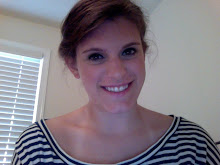I think page 136 says it well "The art that ensued from this interpretation (avant agarde) of modernization could be seen as elitist, anti-demoratic, and at odds with mass culture". Modernists are in my opinion very anti-mainstream. They attempt to create art and masterpieces that later become mainstream, at which point they redesign and reconfigure to fabricate a new modern genre. On page 47, it mentions that things that used to be modern are now sitting on shelves in university libraries as 'classic'. Society as a whole are modernists in loose interpretation, because they welcome modernism into their sphere, however, modernists as a whole are more removed from their art. I get the sense that modernists create a piece and walk away from it--almost sensing public mass production and exploitation. These artists don't revel in their works, they move on to the next piece without looking back.
Modernists would think that each individual decides what art is for themselves. They would say that art is a personal matter, and that, interpretation and conceptual-ism all aid art's definition. Modernists are self-proclaimed exiles who choose to be out of the mainstream, whereas post-modernists were so far from society that they weren't ever apart of the bigger world. Modernists also reject modernity, the industrial side of modernism, because modernity is about fusing form and function, and most modernists care more about the emotion of a piece, rather than the use of it.
